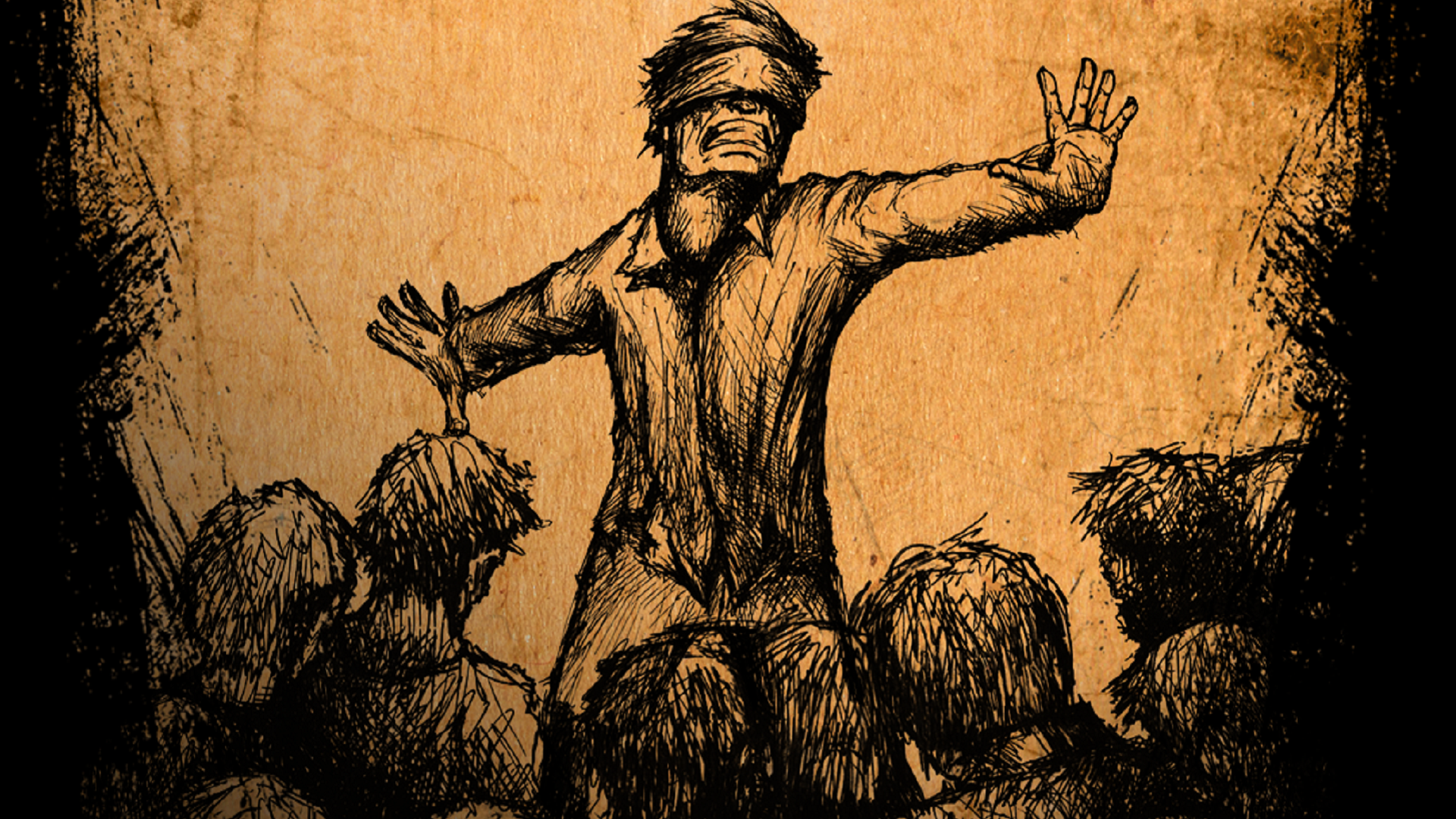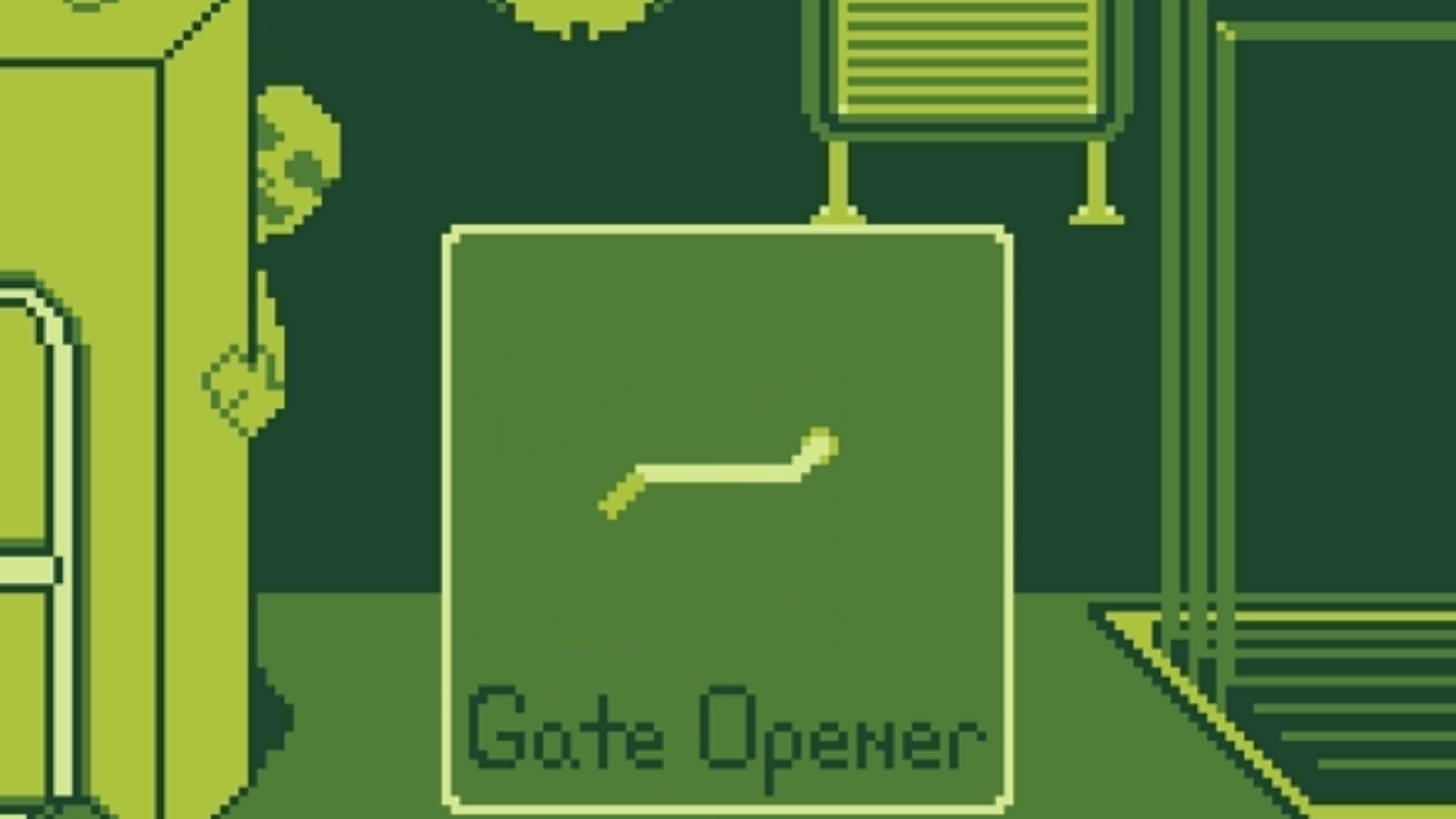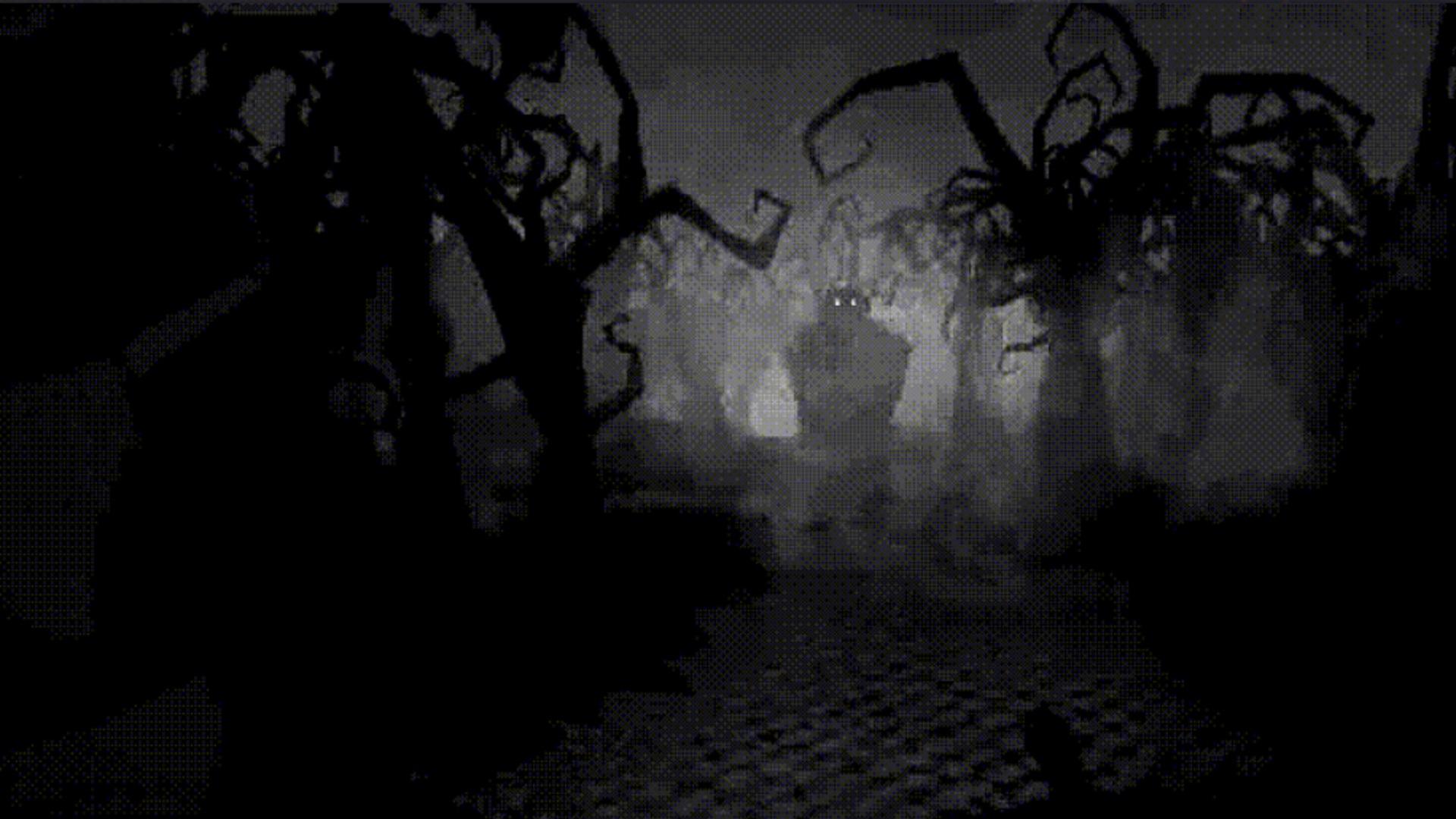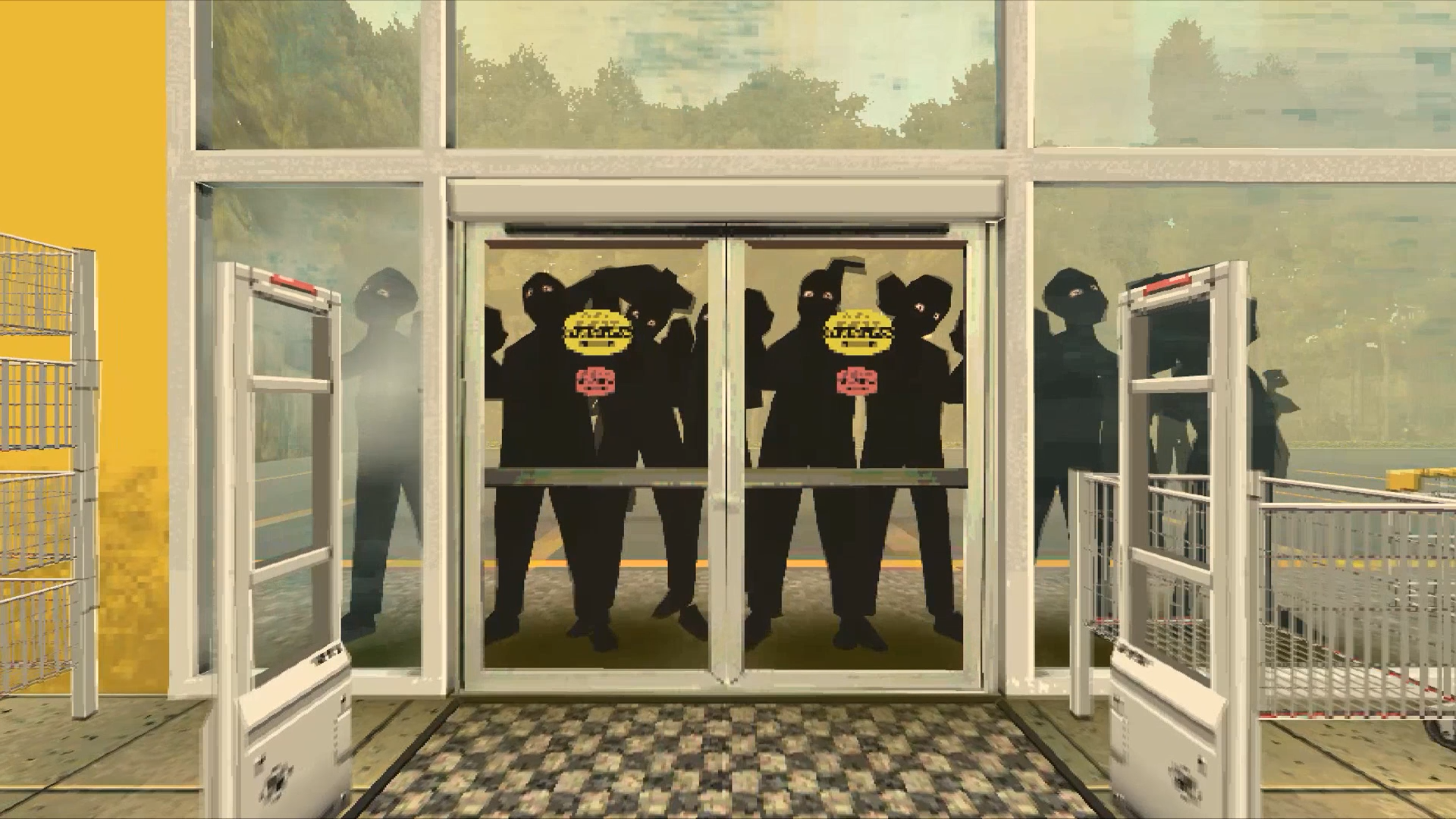
Anatomy of a Scare – DeadFright’s Blind Flights of Fear
The Anatomy of a Scare series interviews horror game developers about the most chilling scares in their titles, examining how they were created, what thoughts went into their design, and the reasons they felt these moments were so terrifying.
A good horror game might make you shut your eyes in fear, trying to block out whatever terrifying thing is lumbering your way. Except that can kind of make it hard to play. Not DeadFright, though, which is a frightening game played purely with its audio as the protagonist has found themselves blinded.
“DeadFright is a first-person perspective survival horror audio game that develops in a 3D acoustic environment designed with dynamic and spatial sounds that generate an immersive binaural audio experience,” said Jorge Orta of Korta Interactive LLC, developers of the game. Orta is no stranger to audio design, having worked in sound design, composing, and audio implementing for seven years, and aims to put all those skills to work on the game
“The story of the game unfolds in the small town of Ravenford where you found yourself stranded and blind. You will need to navigate yourself around to find help and escape from a horrible outbreak of living corpses created by a mad doctor,” he continued.
While you no longer have to worry about seeing some awful thing rushing your way, you now have to be carefully listening for it as the game uses its audio to create the game world in your mind. Still, only working off of audio would create some unique challenges for the developer, but also some opportunities for equally unique frights, as the dead come looking for a player that can only detect them with their ears..

The Setup
When asked about DeadFright’s inspirations, Orta mentions an unusual source. “I guess I could say that games like Resident Evil and Silent Hill are a direct inspiration for designing this experience. I’m also a big fan of podcasts about scary and creepy stories, I always listen to them when I go to bed, and there, in the dark, with my eyes closed, I try to immerse myself in the story. So I guess that was a big influence in designing that scary experience.”
That focus on audio-only experiences made for some sharp ideas for the game. Only being able to navigate and assess your situation through sound makes for some tantalizing horror possibilities, which the developer has already put to work in DeadFright’s demo (which is available now to help you decide if you want to support the game’s Kickstarter). In it, players will find themselves wandering a city for about an hour. Assuming the shambling corpses don’t grab them before that point.
“The most important scare in the game is definitely when a living corpse notices you. When that happens, you only get a small window of time to decide where to run before it catches you. The concept of the game is to be cautious and stealthy. When you get caught, you will be able to fight and escape, but will end up injured and lose your running and fighting abilities, leaving you completely vulnerable to a second attack. And if you get caught again while injured, you will die,” said Orta.
Being chased with little more than sound telling you whether the monster is about to grab you makes for some real terror, as does the fact that you’re still trying to navigate the city using sound as you run away. You need to listen for landmarks to help you get your bearings as something is snarling right behind your back, and hopefully not get so caught up in your listening that you don’t catch the sound of another corpse you’re about to stumble into.
Part of making the player feel afraid throughout DeadFright is in having them savor that approach towards a corpse, knowing they have to sneak around it somehow. It’s in having the player draw ever-closer to something that can kill them, feeling like every step could be their last.
“This is the most important aspect in a good horror game. For me, a cheap jump scare comes when the player is not expecting it to happen. A good quality scare comes when the player is expecting it but still jumps from the scare,” said Orta. “To set the player for the scare, first we place them in the “danger zone”, which is on the outside ambient of the town. The streets are empty and you feel alone; you can’t see anything, but you need to keep exploring. There are living corpses roaming around and they can be easily heard from a safe distance, but the challenge of navigating around them in total darkness makes the situation nerve-wracking.”
While listening to growling corpses is pretty frightening on its own, DeadFright also makes use of a minimalist soundtrack to make the player uneasy. “Additionally, the music of the game in this “danger zone” plays a huge role in setting the scare. It is minimalistic enough not to interfere with the soundscape, but with just the right notes played at the right moment, it builds up the fear in the situation,” said Orta.
The sounds of the corpses themselves take advantage of Orta’s years of work in sound design to really evoke some uncomfortable feelings in the player as well, both on-approach and when they’ve had an unfortunate encounter with the beasts. The design of the game was also shaped by what he felt would make the right kind of monstrosity to deal with in a situation where you only had sound to navigate.
“Well, at first I just had the creepy night environment, and the navigation mechanic that is very connected to the level design because you need to guide yourself with multiple audio landmarks that are all around town, like windchimes, a fountain, a barking dog, etc. Because of this, I needed a creature that was loud so you could detect its position, and kind of slow so you could have a chance of escaping from it. And thus, a living corpse was the ideal candidate. In that sense, I let the game design guide me into what was the best decision to take for the creature design,” said Orta.

The Scare
In knowing the kind of monster that would frighten the player and would best function with DeadFright’s audio-only play style, Orta put together his sickening, frightening corpses with several aims. “I wanted the living corpses to evoke two things: fear and repulsion. For the fear part, I went to the basics of human nature. For humans, a low frequency is naturally associated with a big predator and thus is a fear-inducer, so every living corpse has a radius of a low drone frequency that gets louder as they get closer to you. If you let them get too close, they will detect you and you will be notified by an orchestral stinger, a trademark of the horror genre, and a growl from the creature. This is the part when you need to run!”
Orta used his knowledge of sound to drum up instinctual feelings of fear and dread within the player, creating an emotional response with the audio. He developed something that naturally makes the player afraid purely based on drawing upon that predator-like sound, which makes every time you have to wander close to the monsters, or each time you blunder into them and get caught, into a moment wrought with terror.
Given the challenge of avoiding monsters with only sound, it’s a nice boon that you can survive one attack in DeadFright, only dying on your second run-in. Still, Orta wanted this initial encounter to feel terrifying through the sound design as well. No sense letting the player get off easily.
“If the player survived the attack, I wanted them to feel their mistake – your heartbeat is loud, you are limping, you can’t run, and the idea of not being able to fight again makes you more focused and careful. To recover from this, the player needs to find help inside one of the houses to get healed. But if you don’t survive the attack, I wanted to give a treat to the player for trying, and that treat is to come back to life as a living corpse and play in the reverse role, searching and killing residents,” said Orta.
He draws upon a sense of disgust with his sound design for DeadFright‘s unsettling encounters, creating a moment players likely won’t want to hear twice. “As for the repulsion factor, you’ll get it the first time you fight with one of them. The creatures will bite you while making disgusting mouth sounds, and if you lose the fight, the creature starts eating you, and you hear some very gruesome sounds of ripping flesh and crushed bones that people have already told me are hair-raising,” he continued.
With the sound design of player death, he creates a useful unease for the next time the player encounters the creatures. When you die in a horror game, the nature of your death can make you never want to witness or experience it again. Outlast has a handful of these unsettling ends where you witness your head being ripped from your body, and Five Nights at Freddy’s uses the moment of your death in a jarring visual as well. In this title, you get a sickening audio image of being eaten alive, which adds a great deal of disgust at the idea of ever getting caught again.
With both of these elements, Orta created a powerful scare that can be lurking for the player just about anywhere in DeadFright as they try to navigate around the monsters using sound. “The cool thing about this scare is that it comes at random moments,” said Orta. “Yes, you can hear the living corpses from a safe distance, but navigating between them can be tricky as they can be blocking a place you need to go to, and going around them means that you can bump into another one. If this happens, the stress of the situation makes the player run impulsively, lose their sense of direction, and get caught.”
This has resulted in a game where even the developer, who knows it inside and out, can still be frightened by it. “I have been caught in ways that I never expected and genuinely got scared by my own creation. Sometimes, you exit a house and a living corpse happens to be just outside and catches you on the spot. Sometimes you are running away from one and stumble into another and get caught by both of them, which is a fatal situation. There was this time that I had two of them on my tail, but I knew I had a house just in front of me that I could get inside and be safe. But as I reached the door, it was closed, I wasn’t expecting that. And I screamed as the corpses caught me in that trap,” said Orta.

Aftermath
Through this audio work, Orta created a jarring scare that players would endure any time they ran into one of DeadFright’s horrible monsters. With little to use to avoid these creatures besides sound, the game sets the player up for some incredible tension as they use their ears to gauge how close they are to something, and if they accidentally alert a corpse, sound is all they can use to orient themselves as they blindly run. Likely right into another corpse. It’s a frightening setup, and with the added disgust and terror created by the sickening sounds you’ll hear upon getting caught or getting eaten, it makes the player feel that they never, ever want to get caught, but in the likely panic that comes from a predator noticing them, it’s almost impossible for them not to. Unless they can keep a cool head, but Orta has worked hard to create a soundscape that makes that a real challenge.
The reactions to the demo have been pleasing for the developer, so far. “I shared the demo with the game audio community and the feedback was amazing,” said Orta. “That’s something that comforts me a lot, because as a solo game developer, it is easy to lose perspective of your design, and I was worried that something like that could happen to me. Still, the game needs a lot of tweaking and I’m already taking notes of some feedback to improve it, but the core mechanics of the game, along with the ambience, has already proven to be fun and scary.”
Orta is looking to continue to build onto this frightening experience, giving players more places to creep through as they use sound to avoid the monsters that stalk them. In doing so, DeadFright creates a powerful sense of unease and fear as the player attempts to explore with just their hearing, knowing that if they get caught by something, they’ll have to run away using only a few noises to know their escape route. It’s a terrifying scenario enhanced by Orta’s sound design, creating a fear born, and fueled, by sound all by itself.





Jorge Orta
It was a pleasure Joel,
Thanks!